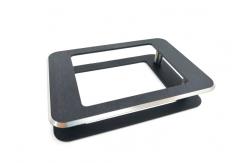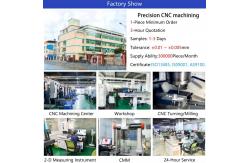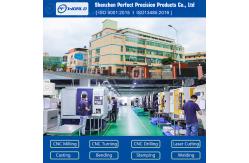Precision stainless steel processing and manufacturing parts
|
|
In the world of manufacturing, precision stainless steel processing plays a pivotal role in producing parts that are not only durable but also capable of performing in demanding environments. Stainless steel, with its exceptional corrosion resistance, strength, and versatility, is widely used across industries such as aerospace, automotive, medical, and industrial machinery. The ability to process stainless steel parts with precision ensures that these components meet the highest standards of quality, performance, and safety.
What is Precision Stainless Steel Processing?
Unlike traditional machining methods, precision processing focuses on achieving an extraordinarily high level of accuracy, often down to fractions of a millimeter. The goal is to ensure that the final part performs optimally under challenging conditions while meeting design specifications.
Key Characteristics of Stainless Steel
These qualities make stainless steel an ideal material for a wide range of applications, but they also present unique challenges when it comes to machining. Stainless steel is harder than many other materials, and it requires specialized tools, techniques, and care to produce precision parts that meet the required specifications.
Techniques for Precision Stainless Steel Processing
1. CNC Machining (Computer Numerical Control)
For stainless steel parts, CNC machining ensures that each cut is made to exact tolerances, which is especially critical for parts that require tight fits or are used in high-performance applications like aerospace or medical devices. CNC mills and lathes allow for multi-axis movements (e.g., 3-axis, 5-axis), enabling the machining of complex geometries and shapes that would be difficult to achieve manually.
2. Laser Cutting and Laser Etching
Laser etching, on the other hand, is used to engrave or mark stainless steel without affecting the material's integrity. It can be used to add serial numbers, logos, or barcodes onto parts, or to create complex surface textures.
3. Water Jet Cutting
Water jet cutting can produce precise parts with smooth edges and is often used in industries where part quality and surface finish are critical.
4. Grinding and Polishing
Polishing further refines the surface, giving stainless steel its shiny, mirror-like finish. Polished stainless steel parts are not only more attractive but are also easier to clean and maintain, which is why this technique is commonly used in food processing, medical, and kitchen appliance industries.
5. EDM (Electrical Discharge Machining)
EDM is commonly used in tooling, molds, and aerospace components that require both intricate detail and durability.
Benefits of Precision Stainless Steel Processing
1. High-Quality, Durable Parts
2. Tight Tolerances and Accuracy
3. Versatility in Design
4. Corrosion Resistance
5. Aesthetic Quality
6. Cost-Effectiveness for Small to Medium Production Runs
Applications of Precision Stainless Steel Parts
1. Aerospace
2. Automotive
3. Medical Devices
4. Food and Beverage Processing
5. Electronics
6. Architectural and Decorative Applications
FAQ1. Are you a manufacturer or a trading company? We are a factory located in Shenzhen, China, with 20 years of rich experience, covering 6000 square meters. Complete facilities, including 3D quality inspection equipment, ERP system and 40 machines. If necessary, we can provide you with material certificates, sample quality inspection and other reports. 2. How to get a quote? Detailed drawings (PDF/STEP/IGS/DWG...), including quality, delivery date, materials, quality, quantity, surface treatment and other information. 3. Can I get a quotation without drawings? Can your engineering team draw for my creativity? Of course, we are also glad to receive your samples, pictures or detailed size drafts for accurate quotation. 4. Can you provide samples before mass production? Of course, the sample fee is necessary. If possible, it will be returned during mass production. 5. What is the delivery date? Generally, the sample lasts for 1-2 weeks and the batch production lasts for 3-4 weeks. 6. How do you control quality? (1) Material Inspection - Check material surfaces and approximate dimensions. (2) First inspection of production - ensure critical dimensions in mass production. (3) Sampling inspection - check the quality before delivery to the warehouse. (4) Preshipment inspection - 100% inspection by QC assistant before shipment. 7. After sales service team If you have any problems after receiving the product, you can provide feedback through voice call, video conference, email, etc. within one month. Our team will provide you with solutions within a week.
|
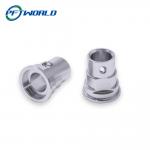
|
Anodizing Stainless Steel Alloy Components |
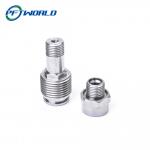
|
Brushing CNC Precision Machining Part |
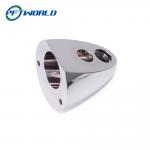
|
Titanium Turning CNC Stainless Steel Parts Brush Electrophoresis Surface |
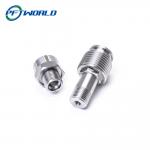
|
SUS303 Stainless Steel Turned Components , Laser Anodized CNC Machining Parts |
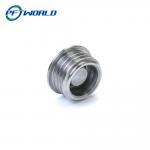
|
Powder Coating CNC Stainless Steel Parts Sandblast Micro Machining |
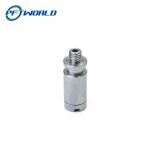
|
Painting Brass Stainless Steel CNC Machined Parts Sandblast Surface |

